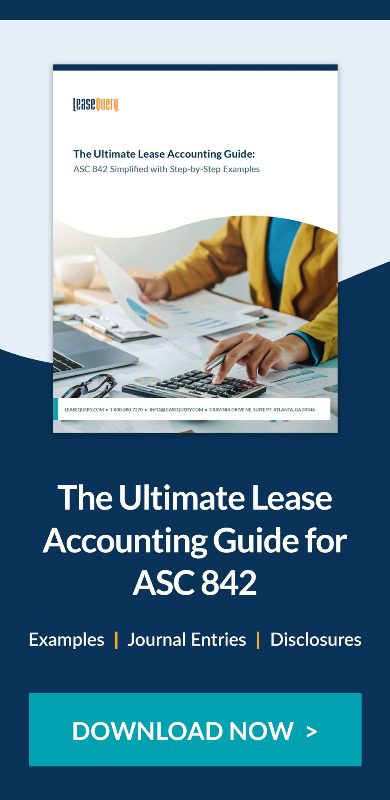Update to ASC 842 for Common Control Arrangements
Common control leasing arrangements are frequent among private companies for various reasons, including tax planning and legal liability. However, private companies have found applying ASC 842 to these types of leases challenging.
While the FASB does not explicitly define “common control”, in practice entities look to guidance provided by the SEC for parameters. As such, entities with 50% or more of the voting ownership interest held by the same individual, enterprise, shareholder group, or family members are deemed to be under common control. A lease between two entities under common control is a related party lease, also referred to as a common control leasing arrangement. While all common control leasing arrangements are related party leases, not all related party leases are common control leasing arrangements.
Update #1: Terms and conditions to be considered
ASC 840 versus ASC 842
Under ASC 840, entities accounted for related party leases based on their “economic substance,” meaning if you were paying for the use of an asset, a lease was in place regardless of legal documentation. ASC 842 changed this by requiring related party leases to be accounted for according to their “legally enforceable terms and conditions.” ASC 842-10-55-12 states
“Leases between related parties should be classified in accordance with the lease classification criteria applicable to all other leases on the basis of the legally enforceable terms and conditions of the lease. In the separate financial statements of the related parties, the classification and accounting for the leases should be the same as for leases between unrelated parties.”
Because of the specific nature of related party leases between entities under common control, documentation of the terms and conditions of these arrangements is often less formal or does not exist. Understandably, the lack of documentation has led to some confusion on how to account for these transactions under ASC 842.
New changes
On March 27, 2023, the FASB issued Accounting Standards Update 2023– 01, Leases (Topic 842): Common Control Arrangements (ASU 2023-01) amending the current accounting treatment for certain related-party leases. The changes provide private companies under common control an optional practical expedient to apply any written terms for arrangements between themselves as being legally enforceable on a lease-by-lease basis. However, if the terms and conditions are not written, the practical expedient would not be applicable and the company would still have to go through the exercise of determining what is legally enforceable under the current guidance of ASC 842-10-55-12.
The updates reduce the complexity of accounting for common control leases and eliminate the added expense of hiring someone to draft a legally enforceable contract. Instead, the two related parties under common control could agree on dates and payment information as long as it is documented.
For entities that adopted ASC 842 before the effective date of ASU 2023-01, March 27, 2023, they are allowed to apply the amendments either:
- Prospectively for leases commencing on or after the effective date of ASU 2023-01.
- Retrospectively to the beginning of the period the entity first adopted ASC 842.
Update #2: Accounting for leasehold improvements under common control
Additionally, ASU 2023-01 offers accounting relief for leasehold improvements tied to property leased by entities under common control. While the first update is only for private companies, this update is for both public and private companies. Previously, ASC 842 required the lessee to amortize leasehold improvements over the shorter of the remaining lease term or the useful life of the improvements.
In many cases, common control arrangements can be shorter term, while the useful life of the underlying asset is typically longer because when the lease ends another member firm will still own and control the asset. Because of this, related party leasehold improvements have a much longer anticipated useful life than a normal leasehold improvement. Therefore, private companies have found this accounting treatment does not accurately reflect the economics of those arrangements since the underlying assets provide benefits to both parties in the lease agreement.
The changes require leasehold improvements associated with related party leases between entities under common control to be amortized over the useful life of the improvements to the common control group as long as the lessee controls the use of the leased asset. This provides consistent treatment and more accurate financial reporting for leasehold improvements under common control lease arrangements.
If the lessee gives up control of the underlying asset, any remaining net book value of the leasehold improvements goes back to the lessor and is deemed a transfer of assets between entities.
For entities that adopted ASC 842 before the effective date of ASU 2023-01, March 27, 2023, they are allowed to apply this amendment using one of the following methods:
- Prospectively to all new leasehold improvements recognized on or after the date of adoption of ASU 2023-01
- Prospectively to all new and existing leasehold improvements on or after the adoption of ASU 2023-01 with the unamortized balance of existing leasehold improvements amortized over the remaining economic life to the common control group as of that date
- Retrospectively to the beginning of the period, the entity first adopted ASC 842 with any leasehold improvements that otherwise would not have been amortized recognized through a cumulative-effect adjustment to the opening balance of retained earnings at the beginning of the earliest period presented under ASC 842

